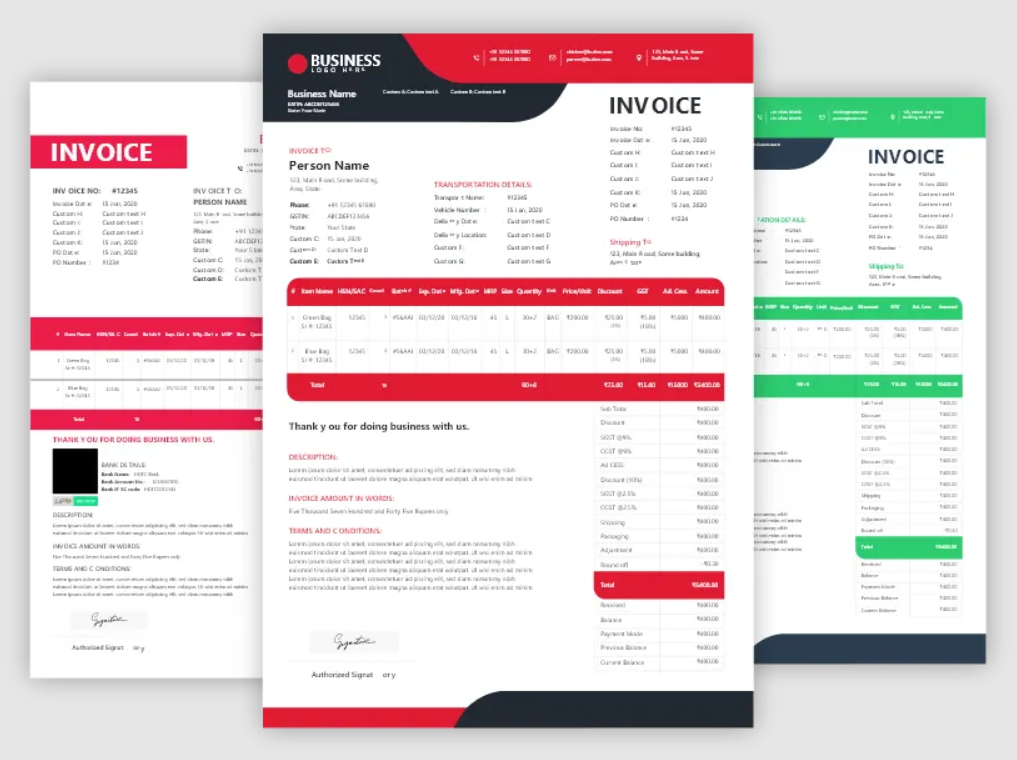Effectively managing real estate assets is paramount for ensuring the seamless and profitable operations of your property portfolio. As your real estate holdings expand, the complexity of tracking crucial details such as leases, tenant information, expenses, and compliance obligations significantly intensifies. Without a dedicated software solution tailored for this purpose, the task becomes increasingly challenging.
Investing in the right asset management platform is crucial, as it offers a centralized hub that enhances visibility into your real estate portfolio. A specialized software provides a comprehensive set of tools designed to optimize returns and streamline operations, thereby alleviating the burden of hours spent on manual administrative tasks.
In essence, the proper asset management platform becomes an invaluable asset itself, empowering you who is a property owner or manager to navigate the intricacies of your expanding real estate ventures with efficiency and precision.
SUMMARY
1. VTS
2. Entrata
3. MRI Software
4. Vative
5. Juniper Square
6. Quickbase
Overview of Real Estate Asset Management Systems
How to Choose Real Estate Asset Management Software
Pros and Cons of Real Estate Asset Management Software
What to Watch Out For
Pro Tips
Recap
>>> MORE: Best Inventory Management For E-commerce
1. VTS
VTS offers high-value real-time analytics on asset performance plus built-in lease management tools aimed at maximizing occupancy.
The VTS platform delivers insightful analytics on metrics like rents, concessions, vacancies, and more to optimize asset allocation and strategy execution. Dashboards provide leasing productivity tracking to keep occupancy high. The software also automates lease management workflows.
2. Entrata
Entrata provides extensive property management capabilities alongside robust accounting tools for consolidated real estate asset oversight.
This all-encompassing, cloud-based asset and property management platform offers integrated solutions for core real estate tasks. That includes detailed operational accounting, plus CRM, utility billing, maintenance tracking, and more. It has an open API for connections to external tools when needed.
3. MRI Software
MRI Software stands out as an exceptional solution for comprehensive commercial real estate management, significantly enhancing your overall business efficiency. Its robust toolset facilitates in-depth analysis of business performance, generating detailed financial reports.
The software excels in automating lease administration, providing valuable resources for effective lease team management. Additionally, it seamlessly handles lease calculations and records financial events such as offsets, recoveries, and breakpoints. The web-based portal offers convenient accessibility over the Internet, adding to its appeal.
It offers plans suitable for organizations of any size, ensuring a tailored solution for your needs. The pricing is straightforward, with a single rate covering most features. Monthly plans range from $599 for small locations to $3000 for large ones, with a custom plan available for high-traffic environments.
A free trial is available, and key features encompass yearly and monthly sign-in/out limits for visitors, contractors, and employees, unlimited notifications via email and push, and an SMS allowance based on the plan. Guest management features cover visitors, contractors, employees, inductions, evacuations, while additional offerings include multi-language support, a mobile app, standard or touchless kiosk options, and employee scheduling.
4. Vative
Vative stands out with flexible, affordable plans scaled for commercial real estate firms of all sizes to track and manage assets.
Vative provides centralized oversight of financial and operational asset details in an easy-to-use platform. Its intuitive interface enables rapid adoption. A library of standard reports supplies visibility into metrics like occupancy rates. The software also facilitates staying on top of critical dates, budgets, leases, and maintenance.
>>> PRO TIPS: Best Billing Software for Ecommerce
5. Juniper Square
Juniper Square offers high-quality analytics plus investor portals specifically aimed at commercial real estate investment management needs.
If investment oversight is the primary need, Juniper Square provides top-tier tools for aggregating key asset metrics to share with stakeholders. Investor portals enable clear visibility into returns and capital flows. Advanced analytics offer comparative performance benchmarking against market averages. But expect to pay more for add-ons like maintenance tracking.
6. Quickbase
Quick Base stood out as an exceptional low-code development platform for its ease of use and comprehensive feature set, particularly excelling in form-based app creation. The platform’s straightforward wizard-based app building process, coupled with a form-based interface for workflow automation, ensures a quick and efficient experience. It boasts a strong prebuilt app marketplace, third-party integrations, and guided tutorial courses, making it an ideal choice for both everyday business users and developers.
Quick Base is an affordable and user-friendly low-code development platform, starting at $25 per user per month. It stands out for its swift and easy app creation, featuring a guided user experience and a visual modeler for defining data structures.
The platform provides a variety of predefined field types and supports calculated fields through formulas, allowing you to customize your apps without extensive coding.
The platform facilitates project maintenance seamlessly, recognizing new fields and allowing customization of field behaviors. Integration capabilities are robust, with support for major CRM and ERP platforms, APIs, Webhooks, and on-premises/cloud integrations.
Overview of Real Estate Asset Management Systems
Real estate asset management platforms focus on enabling strategic oversight of property portfolios through actionable analytics, centralized workflows, investor reporting tools, and more. These solutions aggregate tenant lease details, operating expenses, taxes, maintenance needs, and related financial records across locations for consolidated visibility and tracking.
Many provide pre-built accounting tools as well as utilities management, eliminating the need for third-party software. Reporting dashboards give real-time visibility into occupancy rates, renewal probability, concessions, capital expenditures, and other key performance metrics to inform profitable decisions.
How to Choose Real Estate Asset Management Software
- Ensure the scalability of the property portfolio size to accommodate your total leased square footage and the number of assets
- Check compatibility with your current software stack by opting for systems with native connections or APIs to tools you are already using
- Define target metrics, including must-have reporting on analytics such as occupancy expenses and capital flows, from the outset
- Consider implementation requirements – decide whether your team will handle it or if you require turnkey onboarding services
- Prioritize interfaces by selecting an intuitive, easy-to-use system to drive user adoption Implement permission controls to ensure support for access tiers tailored for employees, investors, and tenants
- Verify that the total cost aligns with the capabilities offered, both in the present and as your operations scale
- Compare service options, including onboarding, training, customization services, and post-launch support
- Uphold information security standards by validating data protection, access controls, encryption, and permissions
>>> GET STARTED: Best Accounting Software for Small Business
Pros and Cons of Real Estate Asset Management Software
Pros
- Optimizes financial performance
- Identifies underutilized properties
- Tracks operational efficiency
- Maintains regulatory compliance
- Centralizes visibility & reporting
- Automates manual processes
Cons
- Centralizes data through software for migration work
- Incurs additional fees for customization needs
- Drives adoption with change management
- Integrates existing software seamlessly
What to Watch Out For
A smooth adoption is facilitated by involving all teams early in the process to get stakeholder buy-in. Integrating existing tools requires considering the time and costs associated with legacy system dependencies.
Verify that the platform allows changes to mirror organizational processes, addressing any lack of customization. Reporting gaps can hamper utility, so ensure the system meets investor, regulatory, and operational needs. Scalability for realistic 3-5 year property and lease volumes is crucial for future portfolio growth. Clarify upfront what’s included versus all potential add-on fees to avoid unexpected costs.
Pro Tips
Follow these proven best practices as you evaluate and implement real estate asset management software:
- Document current pain points rigorously before software selection
- Map all stakeholders involved throughout selection and rollout
- Consult management software peers on vetted solutions
- Verify security, access controls align to company standards early
- Gradually migrate data over several weeks after implementation
- Leverage all available training resources for smoother onboarding
Recap
The article emphasizes the critical role of efficient real estate asset management, particularly as property portfolios grow. It stresses the importance of investing in specialized software solutions to handle the complexities of tracking leases, tenant details, expenses, and compliance obligations. The right asset management platform centralizes visibility, streamlines operations, and saves significant manual effort.
It highlights top software picks like VTS, Entrata, MRI Software, Vative, Juniper Square, and Quick Base, each with its unique strengths and considerations. It provides an overview of real estate asset management systems, outlines criteria for choosing the right software, discusses pros and cons, and offers practical tips for a successful implementation.
Overall, the article serves as a comprehensive guide for you, offering insights into the evolving landscape of real estate asset management and facilitating informed decision-making in choosing the right tools and strategies. Compare costs, features, implementation services, and more to narrow on the best-fit solution for your growing portfolio.













